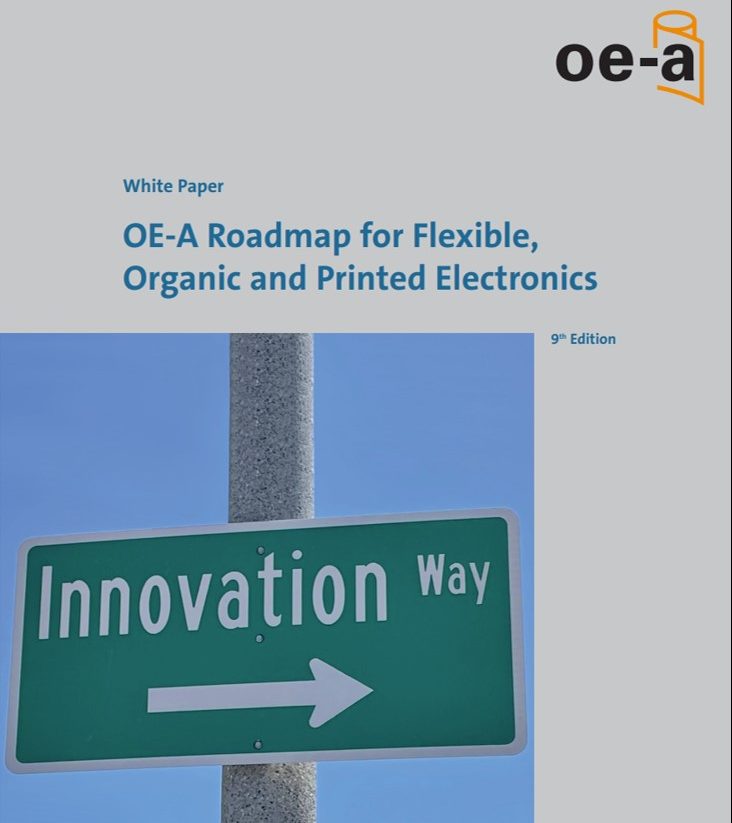Printed electronics is revolutionizing medicine. LOPEC, the International Exhibition and Conference for the Printed Electronics Industry in Munich, Germany, will present new developments from this area from March 24 to 26, 2020. A conversation with LOPEC plenary speaker John A. Rogers, professor at Northwestern University in the US state of Illinois, about monitoring systems and other flexible electronic devices that can be worn directly on the skin or implanted inside the body.
Professor Rogers, you studied chemistry and physics, you could also be called a materials scientist, perhaps even an electrical engineer. What led you to printed electronics?
As a postdoc in Harvard, I became engaged in research around chemical and materials oriented approaches to nanofabrication, of relevance mainly to the microelectronics industry but also to the emerging field of printed electronics back in the 1990s. I then spent some time at Bell Laboratories where we developed programs based on adapting some of these methods to directly pattern the kinds of organic semiconductor materials that were of high interest at the time. We envisioned flexible, paper-like displays, low cost environmental sensors and other types of technologies with features to complement and extend those supported by conventional silicon based systems, rather than to compete directly. Some of the intellectual property developed during this period was licensed by companies that ended up leading the process of commercializing flexible display technologies that are around today.
Now your focus is on medical applications.
Yes, after my time at Bell Laboratories, I moved back to academic research. My focus shifted toward applications of flexible electronics, and later on soft, stretchable electronics, as high information content, intimate interfaces to biology, generally, and to the human body in particular – topics that were not on our radar back at Bell. In one case, we envisioned sophisticated flexible biomedical devices capable of mounting in an imperceptible fashion on the surface of the skin – skin-like, or ‘epidermal’ electronics — to establish clinical quality streams of data on health status, continuously outside of clinical or laboratory settings. Here, mechanical flexibility of the electronics is crucial, as the devices must adapt perfectly to the shapes of the human body and to follow natural movements without constraint.
Among other things, you have developed a monitoring patch for babies.
Yes, these wireless, flexible platforms mount gently and directly onto the skin such that the skin serves as a measurement interface for monitoring all vital signs – heartbeat, respiration rate, body temperature, blood oxygenation and blood pressure – at levels of precision, accuracy and reliability that match those provided by the most sophisticated, conventional hardware found in neonatal and pediatric intensive care units. Here, first and foremost, we have in mind applications for premature and critically ill newborn babies, due to the fragility of their health status and corresponding critical need for continuous monitoring without the encumbrances of traditional wired-based systems. For these patients, our skin-like wireless platforms offer qualitative improvements in care, and they also facilitate handling, holding, caressing and other forms of interaction between parent and child that are known to have important benefits on healthy development.
Do you print the electronic components for the monitoring patches directly on films?
Certain components we print, while others we produce with other schemes – we choose whatever manufacturing method makes the most sense, given an array of considerations in cost, function, size, form factor, biocompatibility. The net outcome is that with this type of non-dogmatic, hybrid approach, we can build sensors that have an overall cost benefit for the care of these types of patients, even in some of the most resource constrained circumstances. For example, through support from the Gates Foundation and the Save the Children Foundation, we have successfully introduced our platform in developing countries. I was in Kenya, Zambia and Tanzania in December to help with that process. There, our systems are used in hospitals for premature babies and for expecting mothers during the intrapartum period, as a way to reduce mortality in these contexts.
You also design electronics from water-soluble, biodegradable materials. What purpose do you pursue with this?
The concept is in electronic components and systems with function that is only necessary over some finite time period, after which the platforms are engineered to disappear automatically and completely, at the level of the materials, without a trace. In the context of biomedicine, the function involves operation inside the body as a temporary implant designed to address a natural, time dependent biological process – to electrically stimulate healing tissues or to release pharmaceutical agents. Monitoring capabilities are also important, where sensors can be configured to provide early alerts to an infection that might develop at a surgical site. Here, we build devices that undergo controlled rates of hydrolysis in biofluids, to yield biocompatible end products that are expelled from the body by normal processes, thereby eliminating what would otherwise require a second surgical procedure for extraction after the period of need.
On the one hand, the implants should function reliably, but on the other hand they should disappear automatically. How do you manage to balance reliability and degradability?
The keys here are, on the one hand, developing proper bioresorbable electronic materials and, on the other hand, defining appropriate device architectures and system layouts. Ideally, the service life of the electronics is controlled by a material component that has no electronic function. In one set of examples, we use the encapsulation layer for this purpose: only after the encapsulation material has dissolved after a certain amount of time, which defines the operational lifetime, do the electrically active materials begin to decompose.
Will you be talking about this at the LOPEC Conference?
A large part of my presentation at LOPEC will focus on monitoring systems for newborns, including stories about their deployment in Africa and, in all likelihood, expanded field trials in India and Pakistan that will be underway as well. In the second part of my presentation, I will introduce our recent work on soft, bodyintegrated microfluidics – we have, for example, developed a system for the capture, storage and biomarker analysis of microliters of sweat – and perhaps also biodegradable electronics.
What do you expect from your participation in the LOPEC Conference?
I am especially looking forward to hearing from the other presenters and participants. I often find synergies between our own work and the activities of other research groups – interdisciplinarity and collaboration are essential aspects of our work in these areas. The LOPEC Conference offers a great opportunity for information exchange. Such discussions usually lead to the most important outcomes of conferences today – areas for joint work and cooperation.
Who are you currently collaborating with?
Since much of what we do these days involves the development of advanced medical technologies, many of our partners come from the clinical sector. But we also have joint projects with in the consumer industry. With La Roche-Posay from the L’Oréal Group, for example, we launched a sensor that quantitatively tracks exposure to UV light from the sun, in a millimeter scale device that operates wirelessly and without a battery, as key unique defining features of the technology. In sweat analytics, we have devices that measure sweat and electrolyte loss, as the basis for a joint product with the sports drink manufacturer Gatorade. Moreover, we are collaborating with companies from the life sciences sector on implantable electronics for cardiac health.
What significance does LOPEC have as a gateway between science and industry?
As an academic, if you want your engineering research to have broad impact, you have to think hard about commercialization and various pathways to manufacturing and production – things that do not naturally happen in a university environment. And this is exactly what I hope for with regard to the LOPEC Conference: that we can use this opportunity to add momentum to our existing efforts and explore opportunities to work jointly on new directions and technologies in this vibrant area of flexible and printed electronics.





